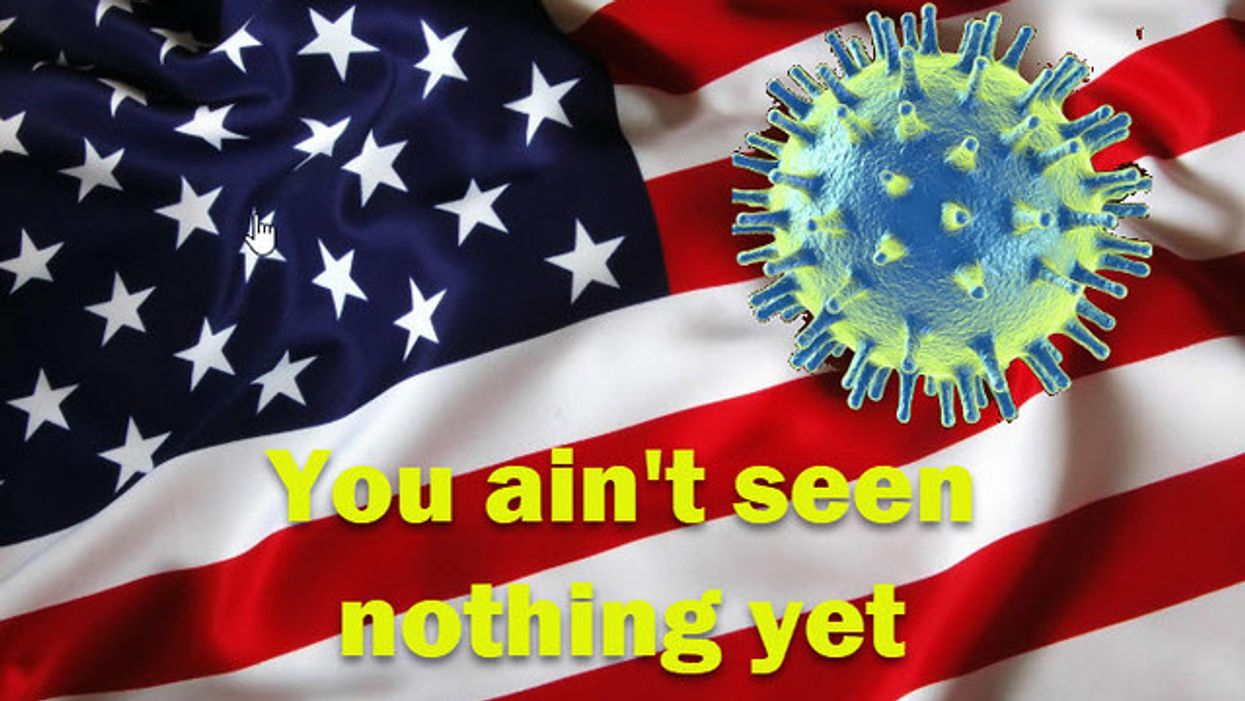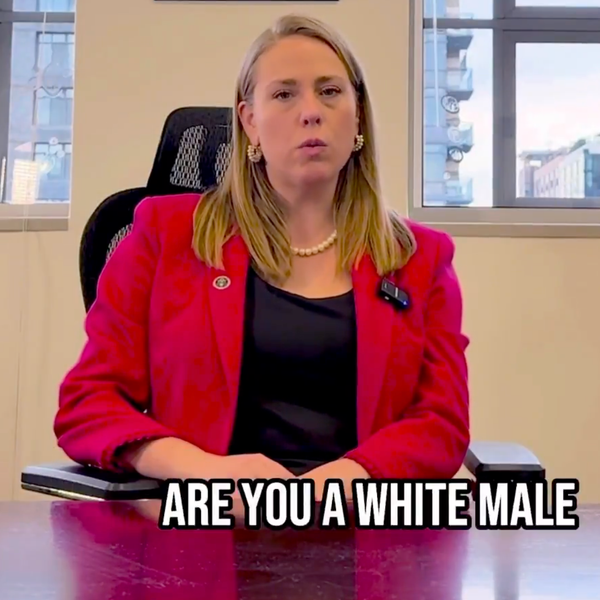America Has Lost 200,000 Lives — How Many More Must Die?

Reprinted with permission from ProPublica
As an editor, I've long had mixed feelings about the journalistic tradition of marking particular chronological or numerical milestones. No one wanted to avoid the “Sept. 11: One Year Later" package — and I was eager to do it given the six previous years I'd spent directing global coverage of al-Qaida — but the annual stories seemed far more forced by Sept. 11, 2005.
More recently, we've seen stories like “World War I: A Century Later" or “The 75th Anniversary of the End of World War II." They're often illuminating, but they don't have deeper meaning than stories that might have been published on the 99th or 74th anniversary of those events.
And yet, there are milestones worth stopping to consider. At ProPublica, it was Andrea Wise, a story producer working for us on contract, who in early May asked: What are we planning for the 100,000th confirmed COVID-19 death? The result was a story we published on May 27 by Caroline Chen that looked back at how we got here and forward to how we might avoid reaching another grim milestone. As we wrote at the time: “The full tragedy of the pandemic hinges on one question: How do we stop the next 100,000?"
The sad, infuriating answer for the country that spends more per capita on health care than any other in the world: We couldn't.
That makes this a moment worthy of some reflection. The United States has recorded the 200,000th COVID-19 death, just four months after the toll hit 100,000. Caroline pointed out in May that the best way to slow the spread of the virus would be to deploy “the oldest mitigation tactics in the public health arsenal." That would have meant widespread testing to identify those who had caught the virus, quarantining and tracing the contacts of both symptomatic and asymptomatic carriers who could spread the disease to the most vulnerable.
“Being slow to act comes with a terrible cost," she wrote.
Caroline and I had pulled together a list of many of the steps to slow down the virus in a road map we addressed to the nation's governors back in April. Our advice was drawn from interviews with health authorities and experts in countries that were successfully battling the pandemic.
Hardly any states followed the practices that had worked well elsewhere. Instead, we saw President Donald Trump convene an indoor political rally in Tulsa, Oklahoma, attended by thousands of people, some of whom have since died of COVID-19. In Sturgis, South Dakota, motorcycle enthusiasts proudly refused to wear masks or socially distance; that gathering has recorded its first fatality from the virus. Inexorably, the novel coronavirus marched across the United States, spreading from New York City and Seattle into the smaller cities and then the suburbs and rural communities. It displayed no real preference for blue or red states, though it has disproportionately harmed Black, Latino and poorer communities.
Our reaction? As a nation, we became inured to a national death toll that has only recently dropped below a thousand people a day. Think about that. Every week, we lose far more of our fellow citizens than died 19 years ago in the most devastating terrorist strike in American history.
As the summer months turn to fall, and the science about the virus grows more definitive, the national conversation has drifted further and further from the basic science. The wearing of masks has somehow turned into just another symbol of partisan warfare, with Trump accepting the Republican nomination on the White House lawn before a tightly packed crowd in which few wore face coverings. As the numbers of cases slowly drift down toward a plateau well above most industrialized countries, senior officials have begun speaking of the virus in the past tense.
Then there's Trump's expectation that there will be a vaccine approved “some time during the month of October." The signs are encouraging. Multiple companies are reporting positive results from their phase 1 trials. But more than one promising pharmaceutical discovery has failed in phase 3. Just this week, AstraZeneca halted its trial after one of the volunteers who took the company's experimental coronavirus vaccine developed neurological problems. (The company is now reviewing whether the symptoms are in any way related to the drug.)
Americans were skeptical about vaccine safety before this week's disclosure that Trump had privately acknowledged the dangers of the coronavirus to journalist Bob Woodward while publicly proclaiming COVID-19 a “hoax" that would soon disappear. Release of a drug before all the data is gathered risks undermining the foundational principle of vaccination, which depends on inoculating very large numbers of people. With pharmaceutical companies publicly pledging not to release a vaccine that has not been fully tested, the odds of a game-changing medicine before 2021 are slim.
All of that brings us back to the things that are proven to work: the old-fashioned methods of social distancing, washing hands, wearing masks, tracing contacts and quarantining the sick. Many countries around the world, from Germany to South Korea to Singapore to Vietnam, have used these techniques to contain the virus. Yes, there are explanations for some of those successes. Islands, with the glaring exception of the United Kingdom, may have some advantages over countries with land borders (though plenty of African nations have very low death rates). Authoritarian governments have more options to coerce citizen cooperation. Asian countries lived through the SARS and MERS outbreaks.
But one need only consider Germany, an industrialized nation of 83 million people, to see how much better the U.S. could have done. So far, only 9,336 Germans have died from COVID-19, a rate of 11.26 per 100,000 citizens. By contrast, our death rate is roughly 58 per 100,000 Americans, more than five times Germany's per capita toll. And while the number of daily deaths is slowly falling here, it's still far higher than most countries with comparable investments in health care.
More than two decades ago, I wrote a book with my New York Times colleagues Judith Miller and Bill Broad called Germs that looked at the modern history of biological warfare. As a result, I was invited in the early aughts to play a Times reporter in a “tabletop" exercise organized by New York City. The health commissioner at the time, Dr. Tom Frieden, played the part of the health commissioner as we went through a dystopian scenario involving a mass anthrax attack on the subways. As the plot unfolded, various players were pushed into ethically uncomfortable questions. At one point, it was suggested that reporters like me had learned that the city lacked sufficient antibiotics to treat everyone who was dying. Would the Times agree to a request from Frieden to withhold that story from its readers? (I said I would not, but I wasn't the boss.) The scenario turned darker. As word got out about the shortages, mobs began breaking into pharmacies to secure medicine. Health care workers refused to go to hospitals. The city fell into chaos.
That exercise assumed that the city's public health system continued to function reasonably well and that individual hospitals or doctors would not be left on their own to figure out what to do. It now seems clear that the U.S. approach, which was to let every state governor and many mayors set their own policies, was far from optimal.
As we head into the fall, a number of the models are projecting an easing of the death toll, which was well over 1,000 Americans a day at its height. One of the most accurate models, by independent data scientist Youyang Gu, projects that the death rate will fall to 400 per day by Nov. 1, with a projected death toll of 218,000.
We will continue to report on every aspect of this horror, from its disparate racial impact to the failures of corporations as well as city, state and federal governments. All we can ask of you, the readers, is that you not become accustomed to this grim routine. We were willing to put up with massive disruptions to our lives after the 9/11 attacks left 3,000 Americans dead. One of Gu's most fascinating models shows that the deaths from COVID-19 in the United States would have been halved if just one in five people with active symptoms had self-quarantined.
Here's hoping that a trustworthy vaccine becomes widely available in the coming months or that more people find ways to self-isolate if they become ill. It is my dream that we will never have to write the story about 300,000th COVID-19 death.
- After 16 Hours Of Rage Tweeting, Trump Posts Condolences To ... ›
- Harvard Scientist Warned Of 'Thermonuclear Pandemic' — And Was ... ›
- With COVID-19 Death Toll Rising, Trump Insists He Deserves Praise ... ›
- Trump Supporters Claim Pandemic Death Stats Are 'Inflated ... ›
- Two Million Americans Haven’t Died Yet, So McEnany Thinks America Should Be Impressed - National Memo ›
- How the Sturgis Motorcycle Rally May Have Led To COVID-19 Outbreaks - National Memo ›








